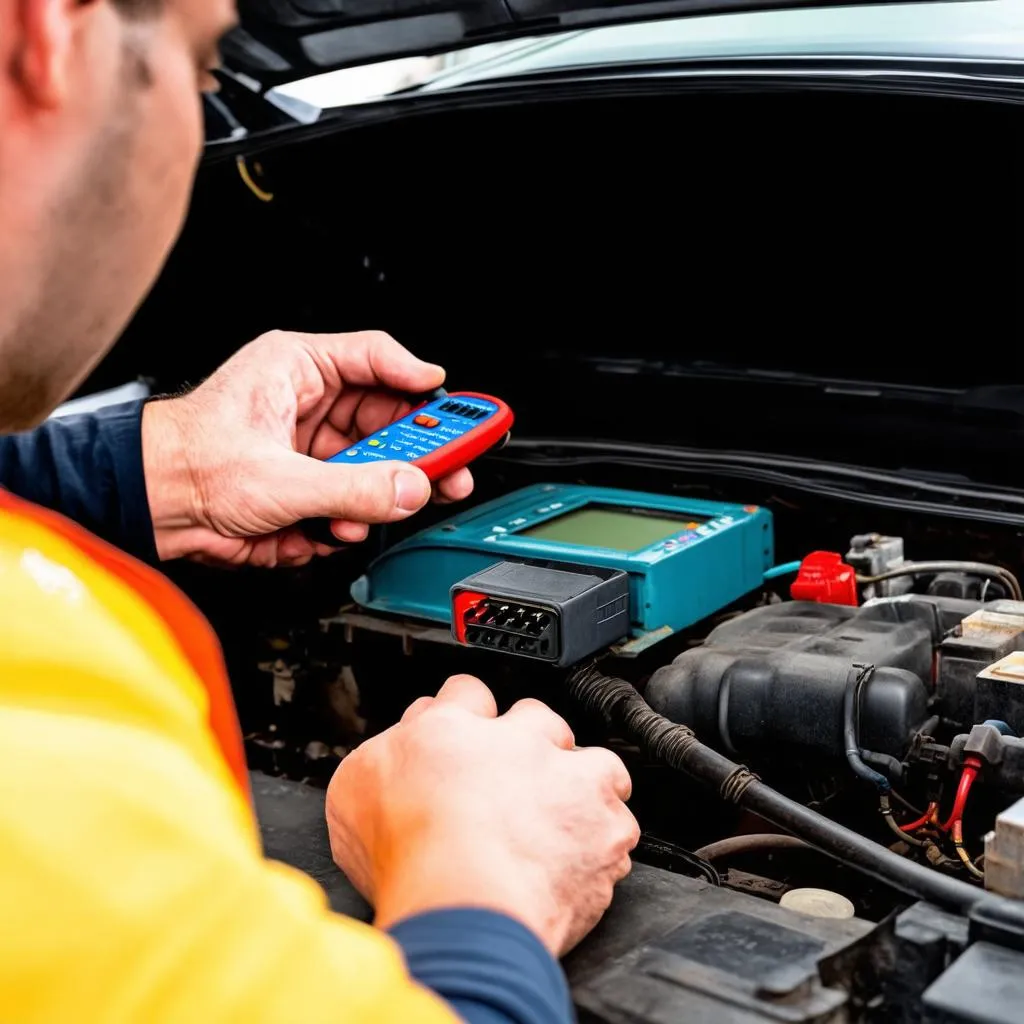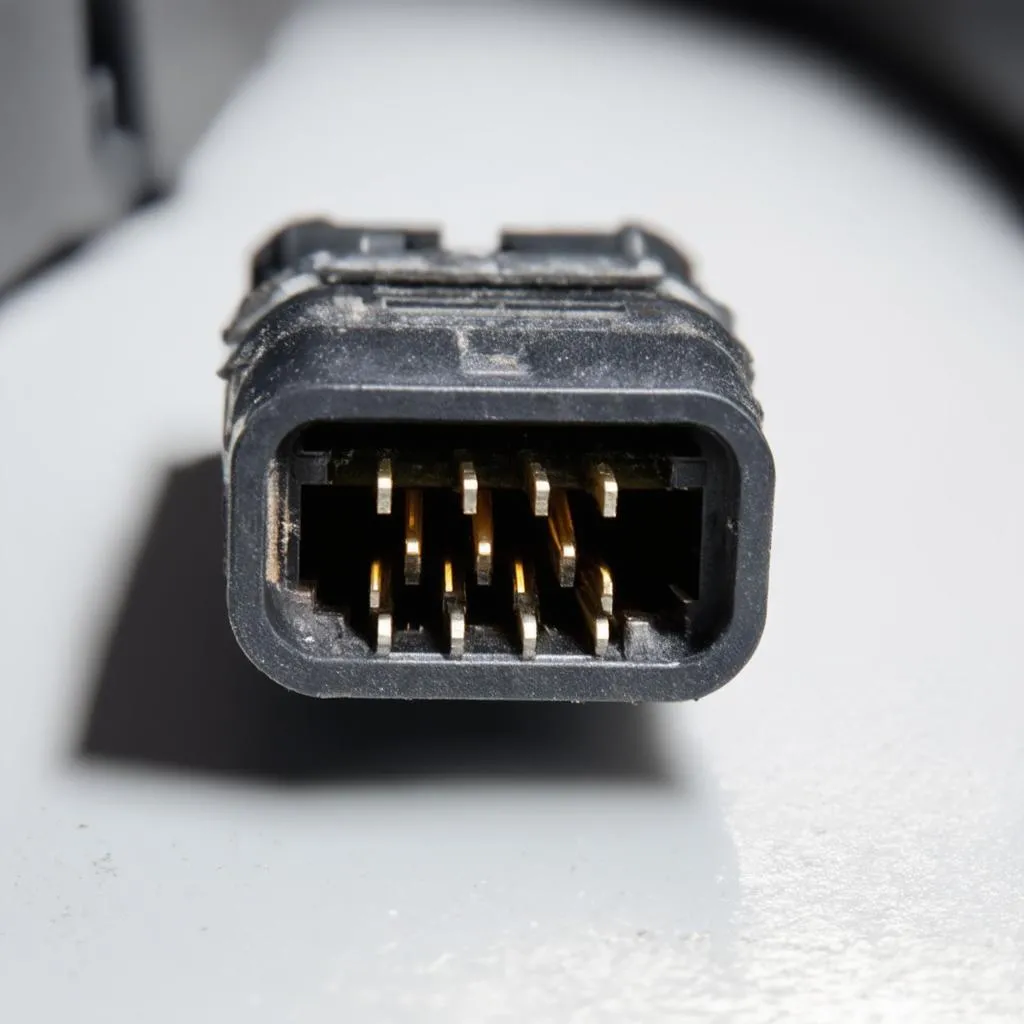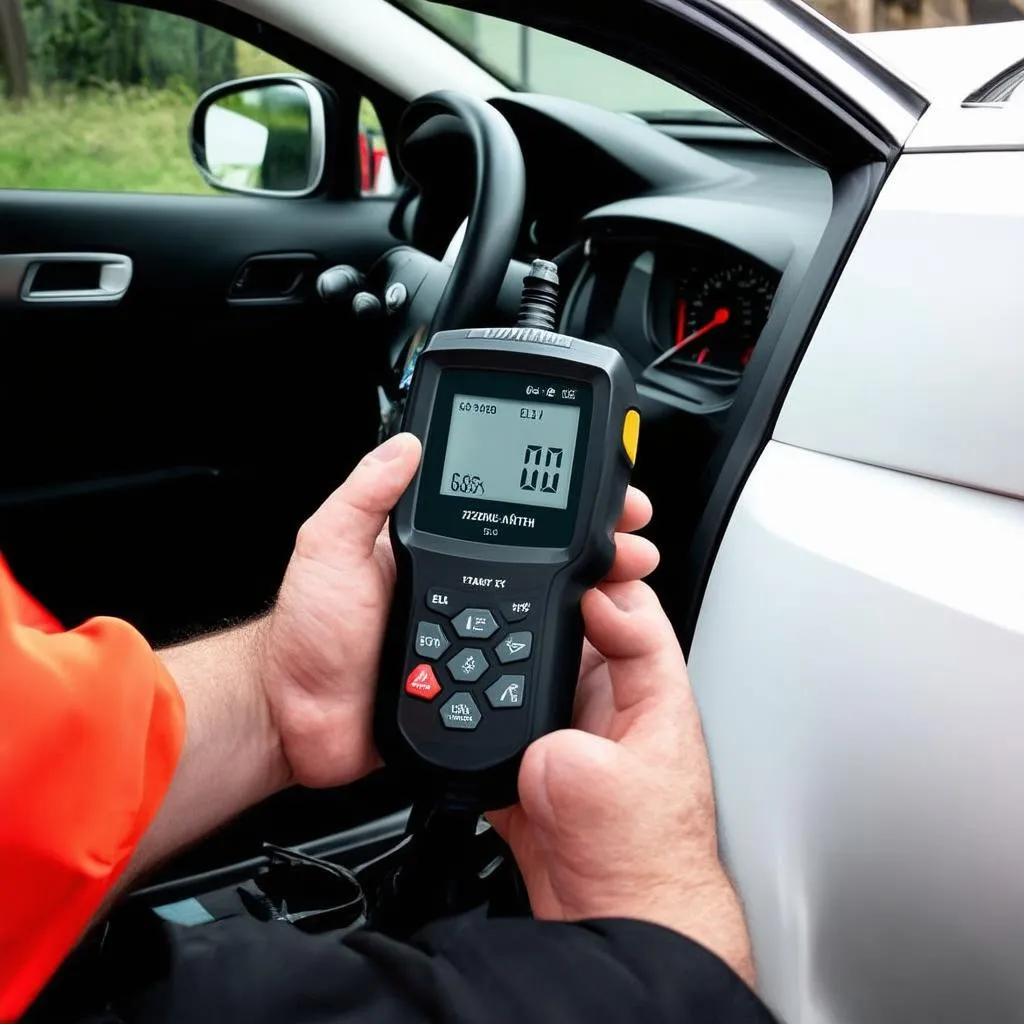Ever had that sinking feeling when your car’s engine light starts flashing like a disco ball? We’ve all been there. And when you try to plug in your trusty OBD2 scanner, you get nothing but silence. That’s when you might start suspecting a problem with your OBD port.
What Does a Bad OBD Port Mean?
The OBD (On-Board Diagnostics) port is your car’s communication hub. It’s the gateway for your mechanic (or you, with the right tools) to access critical information about your car’s health and performance. A bad OBD port means this communication pathway is broken, preventing your scanner from “speaking” to your car’s computer.
Why Is My OBD Port Bad?
There are several culprits behind a malfunctioning OBD port.
The most common reasons are:
- Corrosion: This is the most frequent culprit, especially in cars exposed to harsh weather conditions or those driven on salty roads. The electrical contacts within the port can become corroded, hindering the connection.
- Physical damage: A careless driver or a mishap in the garage can lead to a bent or broken OBD port.
- Wiring issues: Loose or damaged wiring between the port and the car’s control unit can also cause communication problems.
Signs of a Bad OBD Port
Beyond the inability to connect your OBD2 scanner, here are some other symptoms that might point to a faulty OBD port:
- Erratic engine behavior: This could include stalling, misfiring, or rough idling.
- Intermittent electrical problems: Problems with your dashboard lights, gauges, or other electrical systems could be related to the OBD port.
- Check engine light constantly on: This can be a sign of a broader issue, but a faulty OBD port can prevent you from accurately diagnosing the underlying problem.
Diagnosing a Bad OBD Port
It’s crucial to diagnose the problem accurately before taking action. Here’s how you can check if your OBD port is at fault:
- Visual Inspection: Carefully examine the OBD port for signs of corrosion, damage, or loose connections.
- Voltage Check: Using a multimeter, test the voltage at the OBD port. A lack of voltage indicates a wiring issue.
- Alternative Scanner: Try using a different OBD2 scanner to rule out any potential issues with your existing scanner.
How to Fix a Bad OBD Port
If you determine that the OBD port is the culprit, the solution depends on the nature of the problem.
Here are some options:
- Cleaning Corrosion: If corrosion is the issue, you can try cleaning the port with a contact cleaner and a small brush.
- Replacing the OBD Port: If the port is damaged or corroded beyond repair, you’ll need to replace it. This typically involves removing the old port, installing a new one, and reconnecting the wiring.
- Repairing Wiring: Loose or damaged wiring requires professional attention. A certified mechanic can diagnose and fix the wiring issues.
Don’t Attempt Complex Repairs: If you’re not comfortable working with electrical systems, it’s best to leave the repair to a professional mechanic. A botched repair can lead to further damage and potential safety hazards.
Replacing the OBD Port: A Step-by-Step Guide
For the DIY enthusiasts, here’s a general overview of replacing an OBD port:
- Disconnect the battery: This is a crucial safety precaution to prevent electrical shocks.
- Remove the old port: Locate the OBD port, usually under the dashboard near the steering column. Unplug the connector and remove the screws holding the port in place.
- Install the new port: Carefully align the new port and attach it to the car’s wiring harness.
- Secure the port: Tighten the screws holding the port in place.
- Reconnect the battery: Once you’ve completed the installation, reconnect the battery.
- Test the connection: Try plugging in your OBD2 scanner to ensure the connection is working.
The Importance of a Working OBD Port
A properly functioning OBD port is essential for keeping your car running smoothly and efficiently. It allows your mechanic to diagnose and fix problems quickly and efficiently, potentially saving you money and frustration. It also plays a vital role in keeping your car emissions in check, protecting our environment.
Common Questions About Bad Obd Port Replacement
Q: Can I fix a bad OBD port myself?
A: For basic cleaning or replacement, it might be doable for DIY enthusiasts. However, if the problem involves complex wiring or damage, it’s best to seek professional help.
Q: How much does it cost to replace an OBD port?
A: The cost can vary depending on the make and model of your car and the level of complexity involved. Expect to pay anywhere from $50 to $200.
Q: How long does it take to replace an OBD port?
A: A straightforward replacement can take about 30 minutes to an hour. However, more complex wiring issues could take longer.
Want to learn more about diagnostics tools and car repair?
Link to other articles on techcarusa.com
Link to other articles on techcarusa.com
Link to other articles on techcarusa.com
Remember, car maintenance is crucial for a long and happy relationship with your vehicle. Don’t hesitate to contact our team at Whatsapp: +84767531508 for any questions or assistance with your diagnostics tools. We’re here to help you keep your car running smoothly!
Don’t forget to share this article with your fellow car enthusiasts!
 obd port replacement
obd port replacement
 bad obd port
bad obd port
 obd scanner
obd scanner